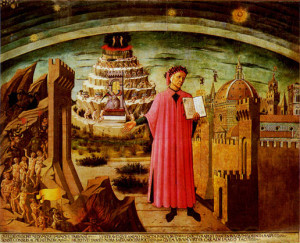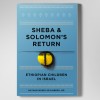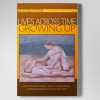The Christ tale:
A man born human, believes himself divine and dies knowing that he is but human (Borges).
Auerbach picks Peter denying Christ to portray the New Testament’s innovations. I focus on his concept of figura: that the Bible spiritually prefigures the New Testament: Abraham’s near-sacrifice of Isaac becomes complete in God’s sacrifice of Christ; nonagenarian Sarah’s conception is bested by Mary’s immaculate conception. We might call this horizontal figura. I extend this concept vertically: all that happens below on earth is paralleled in heaven. “No sparrow falls from heaven that is not seen by God,” insists Matthew (10:29). Figura is an articulation, a connection between the past to the future, or between what happens in the “below“ of our mind/bodies and our higher consciousness.
Recall the Peter scene. Christ creates his circle gathering fishermen, carpenters and a prostitute. Great things will happen of these lowly characters, extensions of the Old Testament shepherds who make good. But, the Biblical Jacob and Joseph must make their own fortune on earth with no heavenly promise for these fortunes; only faith will count to build a nation. Christ in contrast ascetically disdains earthly delights and leads himself to sacrifice, trumps the foreordained but incomplete near-sacrifice of Isaac. His ascetic denial of the flesh is replaced by search for meaning. Christ follows what he believes are his father’s wishes, sacrifices himself for his followers, a new innovation in narrative, a new worldview: one’s death will improve the world, create a future. This is not Odysseus, nor Jacob nor Joseph. Psychoanalysts can see this retrospectively as a grandiose view of masochistic narcissism,# but let us take the tale as it stands and even ask to what degree it is embedded in our inner lives.
The Peter tale creates the setting for unremitting guilt. Promising Christ he would never deny him, Christ insists he will thrice deny before cock’s crow. Peter hides nearby as Christ is denounced. Peter, suspected because of his Galilean accent and appearance to be a Christ follower, succumbs and denies him. When the cock crows, Peter realizes with remorse that he has fulfilled Christ’s prophecy.
Figura is the architecture of New Testament, the structure of a world view. Christ and his disciples, are plebian. This is a view of how a better world will be built, by plain men, not great heros. Peter’s denial of a man he loves sets the stage for deep-seated guilt that becomes a keel guiding his boat of belief; it is the nave that runs along the spine of the Church. Nothing like this we find in Bible nor Homer. It is an innovation, which, measured by years of endurance and numbers of believers, is a successful foundational myth. Something here has etched deeply into man’s psyche. Yet, there is also some kinship, some continuity with the Greek myth: like many Greek characters, although not Odysseus, Christ is born of the union of a God and woman. A demi-God arises who dies a human, but leaves behind great beliefs and believers. Perhaps this is Christ’s tragic flaw and lesson: we may wish to believe we are born demi-gods, but … if we do not outgrow this, we are doomed, as Borges suggests.
Before we leave this, note that Auerbach contrasts the asceticism of the New Testament with the sensuality of Homer and Antique literature. This reverberation between asceticism and sensuality we find embodied restlessly in Anna Freud’s account of adolescence (Anna Freud).
Through the Circles of Hell: Dante and Virgil
We leap centuries, coming briefly to rest at nodal points when our inner life and worldviews reconfigure. Dante’s Inferno is our next way station, a writer so powerful for Auerbach that he wrote a treatise on him alone before Mimesis. In two papers, I suggest that Dante’s discoveries, his innovations, set the stage for what eventually becomes a psychoanalytic enterprise. Dante begins his poem, written in his mother tongue, a severe choice when Latin was the language of serious art. This poem is by a poet about a poet who in the middle of his life finds himself in a dark wood. He first tries to ascend directly to Paradise, as many men of midlife crisis, but tumbles down into his previous despair.
Alone, despondent, Dante realizes he must navigate the depths of terrifying Hell before he can ascend to his beloved Beatrice in Heaven. Terrified, Dante turns to a hoarse voice, one which has not spoken for centuries; he recognizes his ego ideal, Virgil, poet of reason, that creator of Aeneus, Odysseus’ vanquished counterpart. Virgil offers to guide Dante and structure their journey. The nature of their interactions create a model for soul-healing.
First, Dante understands that the journey must be in levels, the less dangerous preceding the more treacherous. One cannot plunge into the depths of Hell and survive. His guide takes him through Circles. At each Circle, Virgil expects Dante will learn some wisdom about one’s sins and how to avoid them. Their relationship is telling: Virgil points out, waits and permits Dante first to decide if he is ready to see what stands before him, and if ready, then draw his own conclusions. Virgil does not tell him what to think. Contrast the Biblical God, who commands righteously; Christ swho peaks with certitude; Athena, who demands actions, mayhem, in order to proceed. Virgil asks Dante to observe, “Let thy words be numbered” and to reflect. And early on, when Dante hesitates at the Fourth Circle, when Dante looks at Virgil’s paling face and misinterprets this as Virgil’s fear, the poet of reason responds: you see correctly fear in my face, but it is my fear for you not myself. Virgil has trod this path before; he knows the vicissitudes of this journey. This, you hear, this poem comes closest to setting a model of a layered mind, a model of how a dialogue between an experienced and trusted guide, one known for his reason, but knowledgeable about intense feelings, this guide who respects his journeyman, who has ventured this treacherous path before, this is the closest we come to a model for psychoanalysis.
This sixteenth century poem lays out basic ingredients for layers of interpretation and the working relationship that can permit soul healing. And ghosty Virgil is a realist. When Dante wonders why he should proceed, when he questions what motivates Virgil to help, Virgil says in the beginning, that it is because of the love of a dear woman, Beatrice, that Virgil came and it is for that love that Dante must proceed.
Later in the journey, Dante’s discoveries and experiences become enough to motivate him, to move him. And once Virgil has guided Dante safely through Hell, climbed the legs of terrifying Satan, passed through Limbo, at the gates of Paradise, Virgil hands his charge to a woman, beloved Beatrice, who will guide him through Paradise. We have seen nothing like this that prefigures psychoanalysis so sensitively.




